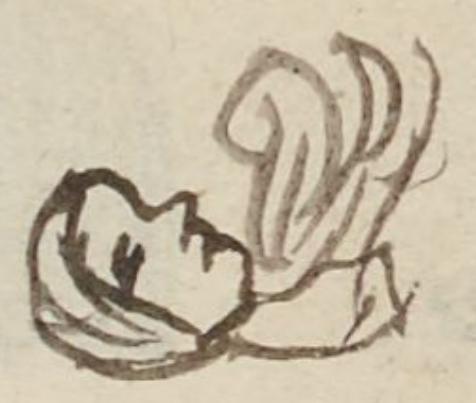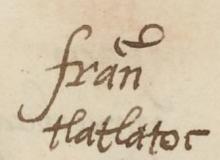Tlatlatoc (MH500r)
This compound glyph for the personal name Tlatlatoc (perhaps "He Lies Burning") is attested here as a man's name. The glyph shows a partial (head and chest), reclining body in profile, facing upward. It appears to be a man, given the hair cut and style, short and over the ears. Flames and smoke [from tlatla, to burn] arise from the body, curling back toward the face. The person's eye does appear to be open, but the final part of the name, -toc, may come from the verb toca, to bury. So, this may be a person who is deceased and whose corpse has been set on fire. The -toc suffix also means to be lying down, prone, stretched out, prone, sometimes asleep. (See our Online Nahuatl Dictionary, using the link below.)
Stephanie Wood
The fire representing the verb to burn (tlatla) is very different here from the flames in a place glyph in the Codex Mendoza (see below). The verb could be interpreted has having both an alphabetic reduplication and a visual one. But many examples of flames and fire are not necessarily reduplicated alphabetically.
Stephanie Wood
franco
tlatlatoc
Francisco Tlatlatoc
Stephanie Wood
1560
Jeff Haskett-Wood
death, muerte, muertos, entierros, cremación, cremaciones, acostado, nombres de hombres

tlatla, to burn, https://nahuatl.wired-humanities.org/content/tlatla
-toc, to be lying down, prone, stretched out, https://nahuatl.wired-humanities.org/content/toc-1
Matrícula de Huexotzinco, folio 500r, World Digital Library, https://www.loc.gov/resource/gdcwdl.wdl_15282/?sp=79&st=image
This manuscript is hosted by the Library of Congress and the World Digital Library; used here with the Creative Commons, “Attribution-NonCommercial-ShareAlike 3.0 License” (CC-BY-NC-SAq 3.0).





